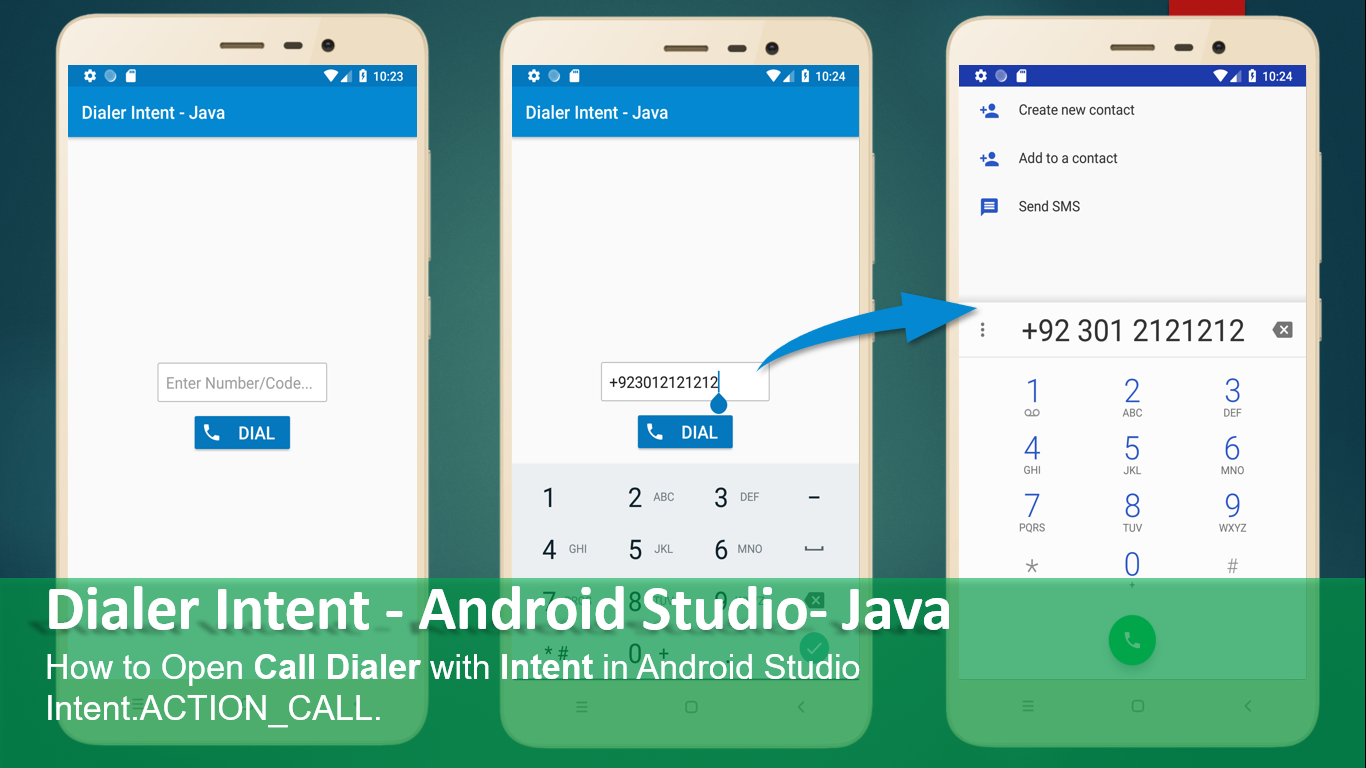

Let’s start out by getting a baseline definition. My goal with this post is to share what I have learned about these powerful abstractions and to provide a useful and interesting example in the process. However, after doing this a few times myself, my lack of understanding kept nagging me to dig deeper. It is all too easy to copy-paste a few lines from a StackOverflow answer and never come back to it because things seem to just work. This may be because Intents tend to work quite smoothly when used in the right circumstances.
ANDROID STUDIO INTENT ACTION ANDROID
Until recently, all I knew about them was that they were used in everything from navigation within an application to media playback and interacting with external applications.ĭespite the many uses of Intents, I never ran across a great explanation of their purpose until I dug into the Android documentation. Intents show up pretty regularly in the official Android tutorials and frequently appear in StackOverflow answers. Next, we will add a couple of member variables and initialize then on the onCreate callback in the MainActivity.If you have spent much time with Android development, you have likely run across Android’s Intent object. When the user clicks the Search button, the application will initiate a search.

On the activity_main.xml page, add a button and an EditView control for the user to enter the search term.
ANDROID STUDIO INTENT ACTION UPDATE
Next, open AndroidManifest.xml and update it to declare our “SEARCH” intent. We will leave the default values unchanged.įigure 5: Again, leaving the default values in placeĬlick Finish to create the project files. We then are prompted to customize the activity. This creates an application with a single activity.

On the “Add an activity to Mobile” page, choose “Blank Activity”. On the next screen, leave the default values and click Next.įigure 3: Leaving the default values in place Provide LaunchSearchDemo as the Application Name and click Next. We will discuss that in more detail later.įire up Android Studio and start a new Android Studio project.įigure 1: Starting a new Android Studio project This will be in the AndroidManifest.xml file. We now will create a simple app that will use intents to perform a Web search.īefore we can use intents, we need to declare the intent filter.

There are many implicit intents that are available for applications to declare and call that are provided by the Android system: If there is more than one app that can handle the intent, the user is asked to choose an app. When we pass an implicit intent, the Android system resolves the intent to an app that can handle the intent and starts that app’s activity. Implicit intents are used when you want start an activity in another application simply by specifying the type of action you want to perform. To navigate to another page, we need to declare an intent. To quickly recap, each Android activity is equivalent to a UI page that is shown in an app. In this article, we will explore how we can start an activity in another application from within your current application. In a previous article, we had learned about intents.


 0 kommentar(er)
0 kommentar(er)
